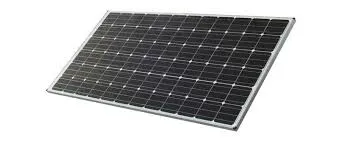dimensions of 100 watt solar panel
Understanding the Dimensions of 100 Watt Solar Panels
In the quest for sustainable energy solutions, solar panels have emerged as a popular choice for homeowners and businesses alike. Among the various sizes available, the 100 watt solar panel serves as an ideal entry point for those looking to harness solar energy. Understanding the dimensions of these panels can help you make an informed decision about installation and application.
Typical Dimensions
A 100 watt solar panel typically measures around 39 inches by 26 inches (about 1 meter by 0.67 meters) and is about 1.5 inches (3.8 cm) thick. These dimensions can vary slightly based on the manufacturer and the specific technology used in the panel. Most 100 watt panels are composed of either monocrystalline or polycrystalline cells, each type having unique characteristics that can affect physical attributes. Monocrystalline panels are usually slightly more efficient and compact, whereas polycrystalline panels might be larger and less expensive.
Weight and Portability
The weight of a 100 watt solar panel is another important factor to consider. On average, these panels weigh between 15 to 25 pounds (about 6.8 to 11.3 kg). This relatively light weight makes them an excellent choice for portable applications, such as RVs, boats, and emergency power setups. Their modest dimensions and weight facilitate easy transport and installation, making them accessible for DIY projects.
Installation Considerations
When planning for the installation of 100 watt solar panels, it is essential to consider their dimensions in relation to your available space. Whether you are placing them on a rooftop or mounting them on the ground, adequate space must be allocated not only for the panels themselves but also for the necessary wiring and accessories. Most systems will also require space for an inverter and battery storage (if applicable), which can impact the overall layout.
dimensions of 100 watt solar panel

It's also crucial to take into account the tilt angle and orientation of the panels, as these factors will influence the efficiency of energy production. A panel’s dimensions can affect how they interact with the sunlight, and therefore, it’s important to securely mount them in a way that maximizes their exposure to sunlight throughout the day.
Efficiency and Output
The efficiency of a 100 watt solar panel can vary, but typical efficiency rates range between 15% to 22%. This means that while a panel may be physically compact, its energy output can be significant for small applications. When positioned properly, a 100 watt panel can generate enough electricity to power small devices, appliances, and even contribute to a home's overall energy needs when used in multiple numbers.
Applications
100 watt solar panels are versatile and can be used for a wide range of applications. These include
- Residential Use They can be used in conjunction with larger systems to supplement energy needs, particularly in remote areas or for charging batteries. - Camping and RVing Their lightweight design and portability make them ideal for off-grid adventures. - Small Appliances They are suitable for powering gadgets such as laptops, lights, and small refrigeration units. - Emergency Backups In times of power outages, these panels can provide a reliable source of energy for critical devices.
Conclusion
The 100 watt solar panel’s compact dimensions and manageable weight make it a fantastic option for beginners and seasoned solar enthusiasts alike. By understanding its physical characteristics and how they relate to energy generation and installation, users can better navigate their choices in the growing solar market. With increasing environmental awareness and technological advancements, investing in solar energy, even at a small scale, is a step towards a more sustainable and self-reliant future. Whether you are looking for an energy solution for your home or embarking on outdoor adventures, a 100 watt solar panel can serve as a valuable asset in your renewable energy toolkit.
-
Unlocking Energy Freedom with the Off Grid Solar InverterNewsJun.06,2025
-
Unlock More Solar Power with a High-Efficiency Bifacial Solar PanelNewsJun.06,2025
-
Power Your Future with High-Efficiency Monocrystalline Solar PanelsNewsJun.06,2025
-
Next-Gen Solar Power Starts with Micro Solar InvertersNewsJun.06,2025
-
Harnessing Peak Efficiency with the On Grid Solar InverterNewsJun.06,2025
-
Discover Unmatched Efficiency with the Latest String Solar InverterNewsJun.06,2025







